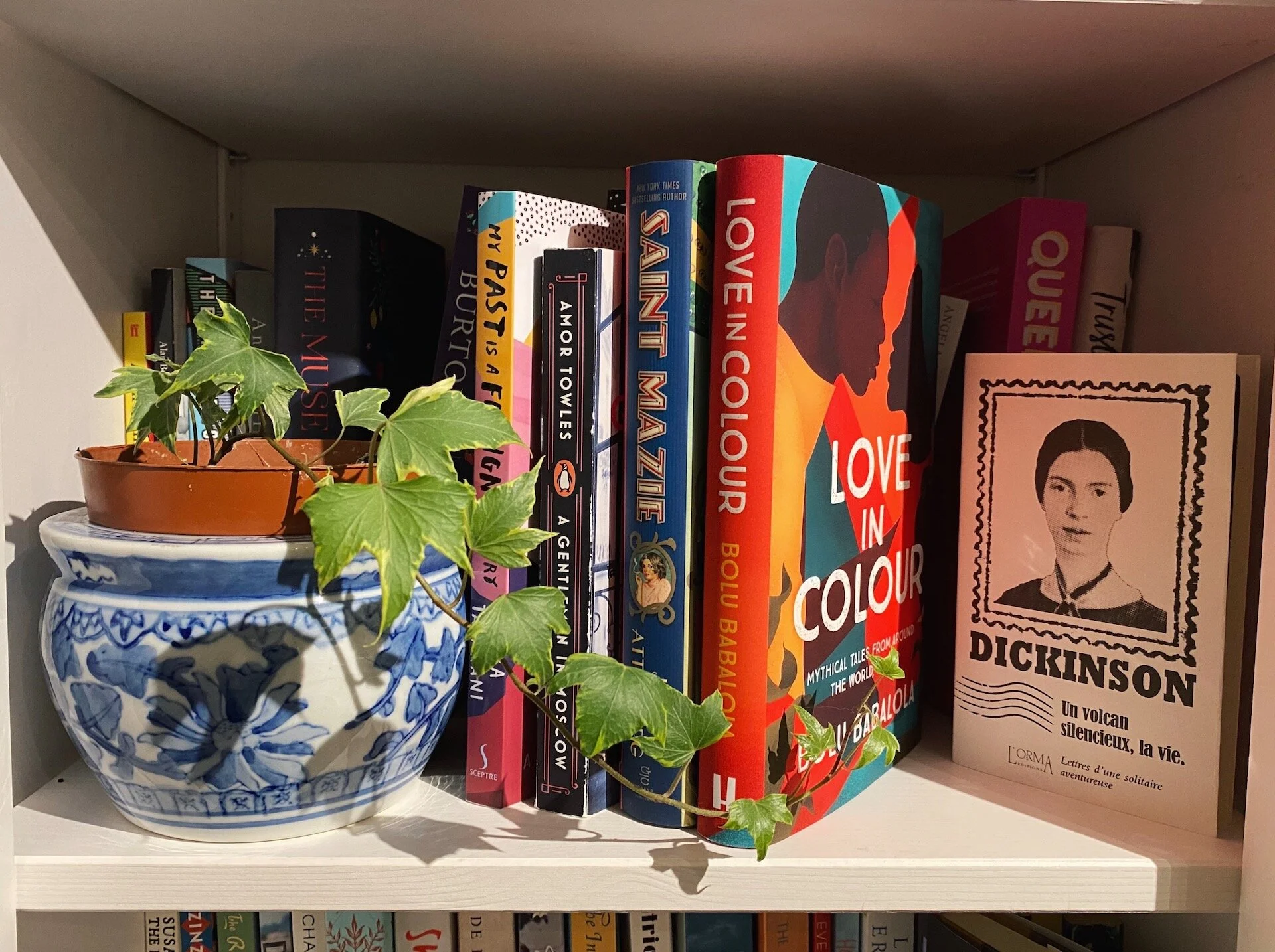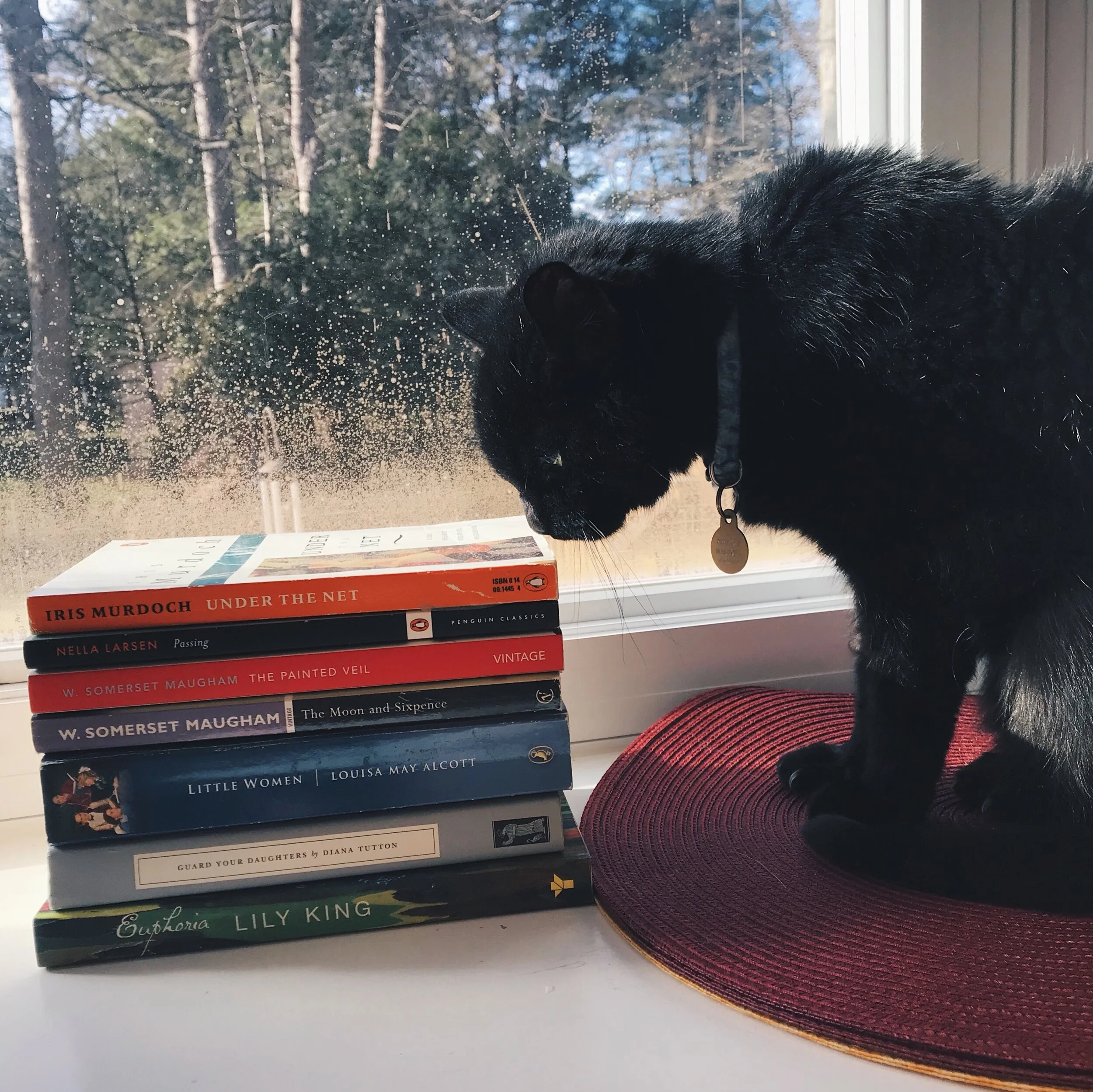What We’re Reading, Vol. 13
Photo by Olivia Gündüz-Willemin.
“October is the grandest of the three siblings of autumn – September and November huddling round it to protect this exuberant middle-child.”
We are halfway through our favorite month here at The Attic, and we can only continue to enjoy and buckle down into our cozy sweaters, blankets, and books as the leaves turn their dramatic shades of copper and bronze, finally flinging themselves through the breeze and landing ever so gracefully at our feet. It is October, that beloved middle child month, as expressed so poignantly by our own Eliza Campbell, and we are living it to the fullest. With the continuing embrace of autumn and its early thematic reads of course, (a few of us even continuing on our September recommendations) there is still the current time of year to consider. There is Halloween, and all of its beloved spookiness, whether direct or understated, and of course taking on new releases as we embrace the publishing world’s favorite time of year as well.
Here’s what we’re reading this month:
Milena Le Fouillé
This month was all about leaving summer behind to welcome the new season, and my readings reflected that shift. I started with a very summer-related classic (Joan Didion's The White Album) before turning to the quintessential autumn read for me: Jane Eyre. I had never felt the need to re-read it since high school, because this novel is so present in the mainstream culture that I felt every plot point was sufficiently fresh in my mind. Reader, I was wrong. The novel was so much richer and more complex than I remembered that, carried by my enthusiasm, I decided to have a Brontë-themed autumn. I stayed a bit longer with Jane Eyre thanks to Daniel Mallory Ortberg's hilarious Texts from Jane Eyre (which instantly became my go-to gift for every bookish friend I have) before finally beginning Jean Rhys's The Wide Sargasso Sea. In the midst of all this, I also read Margaret Atwood's The Testaments, and you can read my review for the Attic here!
Annie Jo Baker
I love weird fiction, but the older stuff, the H P Lovecraft in particular, is incredibly racist and quite sexist. As genre-defining as Lovecraft was (even though he was far from the first weird fiction writer), the true horror in his work isn’t cosmic, but the one created by an entitled white man. So instead of picking through his stories, I’m gonna read some Lovecraft pastiches, of which my favorite is A Study in Emerald— a Neil Gaiman-written Sherlock Holmes-style story, but with the Old Ones still very much there.
On a different horror note, I said earlier this year that summer is for Borges, but that’s because Borges is for all the time, including and especially October in the Northern hemisphere.
On a lighter note, I’m also reading Home: The Story of an Idea by Witold Rybczynski, a book about the creation of the idea of home, and thus family, in modern Western culture. It’s very Eurocentric, but it’s a fun, informative read for when you’re taking a warm bath with a bottle of beer.
Zoë G. Burnett
Much recommended for Attic readers, Susan Owens’s The Ghost: A Cultural History is my first spooky read of the season and a welcome addition to my year-round paranormal books section. Owens, a former curator of paintings at the Victoria & Albert museum, surveys spirits throughout the history of the British Isles. Citing firsthand encounters reaching back to the 8th century, she also explores their shape-shifting representation in literature, theatre, and reality television. Whether you’re a Mulder or a Scully, Owens’s vibrant descriptions and thoroughly researched tales of terror will make you want to believe.
Olivia Gündüz-Willemin
This month has so far been half reading campus novels, half trying to get further into the autumn spirit, all while traveling. Muriel Spark’s The Prime of Miss Jean Brodie spoke to me in a way a non-contemporary novel hasn’t in a very long time, and so getting my hands on more Muriel Spark quickly became a priority. Lucky for me, I spent part of the month in and around Edinburgh, the author’s hometown, and picked up quite a few of her novels. I’m currently racing through The Finishing School – keeping up with the unusual campus novel – and next up are Memento Mori and The Girls of Slender Means. Otherwise, off of last year’s “Understatedly Spooky Reads” list, I’ve been spending time with one of Spark’s contemporaries, Penelope Mortimer, and reading The Pumpkin Eater. A semi-autobiographical dive into the author’s but more importantly the main character of the novel’s psyche, The Pumpkin Eater is essentially a series of talks the protagonist has with her psychiatrist after having a breakdown. Though autumnal in name, the novel explores many realities that are perennial in the lives of women and is definitely going into my list of mid-century favorites.
Lauren Olmeda
I’ve just finished The Death and Life of the Great Lakes by Dan Egan, which was a fantastic albeit depressing read. Egan is a journalist who has covered the Great Lakes since 2003, and the Great Lakes have particular importance to me as they surround my home state of Michigan. The book itself was the product of years of research and interviews with biologists, hydrologists, fishermen and women, politicians, and just your everyday Midwesterner who uses the Great Lakes water to survive - water that is increasingly threatened by invasive species, pollution, and overuse.
I’m now onto Girl, Woman, Other by Bernardino Evaristo. Olivia has chosen it as her pick for the Booker Prize this year, so I have nothing but high hopes going in.
Raquel Reyes
Like Olivia, I had campus novels very much on the brain from the end of last month, when I read The Lessons by Naomi Alderman. Alderman’s writing first struck me with The Power last year and while completely different in subject and time period, The Lessons impressed me in a more tender but just as compelling way. I read it quickly — as her way with literary thrillers make me always want to know how the end turns as soon as possible — but re-read it slowly to let every detail and breathtaking moment capture me deeper.
Catching a cold early last week, I found myself unable to focus but wound up re-reading J.D. Salinger’s Franny and Zooey, if only for the on-brand visual of dear Franny spending her time passed out on the family sofa with the cat while I suffered a similar fate. But the read of the moment came this past weekend when I was finally able to crack open The Dutch House, Ann Patchett’s latest. I’m still ruminating on the familial tour de force, after inhaling its three hundred plus pages over a ten hour period between Saturday and Sunday. There’s so much to say but when trying I can only come up blank, either a result of my still lingering head-cold or perhaps because it feels like it might be more than the month, but the book of the year for me.
Next I will be finally getting into the spooky feel of the season while embracing Latinx Heritage Month and fully jumping into Her Body and Other Parties by Carmen Maria Machado. I’ve read The Husband Stitch and a couple others since its release but have yet to make my way through the entire book of stories. Anticipating Machado’s much buzzed about memoir, (to be released next month) I decided to finally complete the anthology.










Reading Naoise Dolan’s Exciting Times and Katie Kitamura’s Intimacies, Rachel Tay explores the unease of moving away from one’s own country and language.